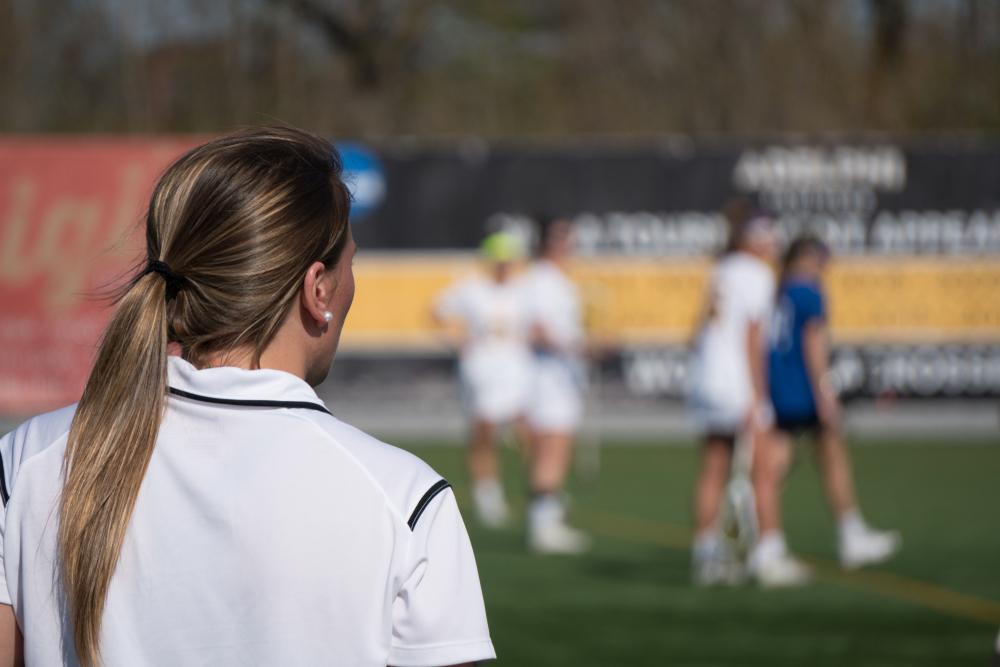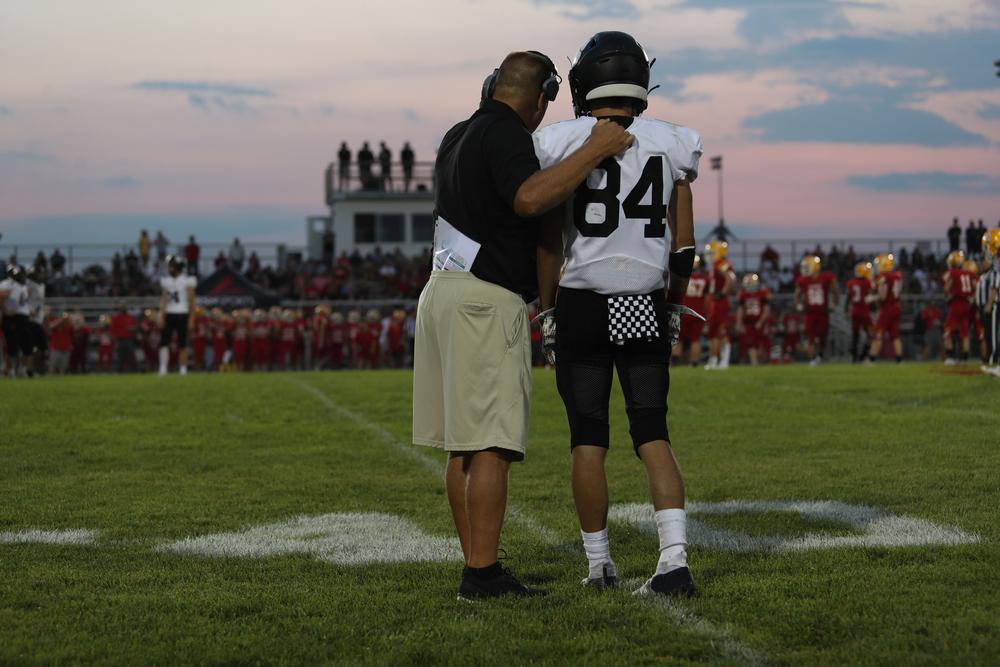By: Dimity McDowell
 Content Warning: This article contains mentions of bullying.
Content Warning: This article contains mentions of bullying.
JC always loved to run. She pinned on her first race bib at age six and in middle school was recruited to train with the high school’s junior varsity team. When she finally entered a suburban Denver high school, she was ready to see how well she could perform. “I wasn’t the star of the team, but I was a strong runner who qualified to run at state meets,” JC says.
JC’s body didn’t react well to the strength training regimen the head coach had the team on—she sustained chronic knee injuries—and she knew she wasn’t in the favored-crowd of athletes he liked to coach. But she powered through, letting her love of running trump how she was being treated.
At a track meet her junior year, the wind and rain were relentless. Still, the meet went on, and JC’s relay team won their race. Excited by winning in such trying circumstances, she asked her coach for feedback. “I don’t exactly recall all he said: the idea was that he expected more from me because I was captain of the team,” she says. “But I definitely remember the final words that came out of his mouth: ‘You suck.’”
Coach-on-Athlete Bullying Is Not Uncommon
If such hurtful words coming from a high school coach’s mouth feel jarring to you, you’re not alone. But bullying situations like this are not as rare as you might think.
“Coach-to-player bullying is more prevalent than we’d like to admit,” says Randy Nathan, MSW, and author of Bullying in Sports. “It’s primarily allowed because old-school coaching styles still prevail. Win at all costs. Focus on the scoreboard. Very few coaches will forfeit a game to give a twelve-year-old a chance to play.” He adds that, while no sport is immune to bullying, male-dominated sports like football and baseball tend to have more incidents of inappropriate behavior.
What’s more, the coach/athlete relationship is inherently unbalanced. When the coach is a positive, supportive role model who understands where his players are developmentally, there tends to be minimal issues. When pressure to win—be it from the coach’s own drive or athletic experience, the athletes, parents of the athletes, or another source—becomes paramount, “the coach no longer sees the athlete as a real person,” says Mark Hamilton, Ph.D., a philosophy professor at Ashland University in Ashland, Ohio who teaches a sports ethics class. “The child becomes humiliated and is afraid to talk about it, so he typically just withdraws. He might even quit the sport but not give a reason.”
JC didn’t withdraw. “I fought back,” she says, “My mom and I met with school administrators and the principal, but nobody seemed to care.” They also met with the coach, who told them that he, “only trains winners.” Plagued with injuries and overly frustrated, JC finally quit track her senior year. “The training and pressure proved to be too much,” she says.
Nathan isn’t surprised that the coach wasn’t immediately fired. “I’ve experienced a bullying coach with my son, and it’s taken over a year to deal with,” he says (and the coach was later reinstated).
What To Do If Your Coach Is A Bully
Still, there are steps you should take if you suspect—or see—your child being bullied by a coach.
- Gauge how your child is interacting with their sport. Is she reluctant to go to practice, even though she loves the sport? And talk to them beyond, “How was practice today?” Ask about how they feel at practice, how they are being treated there, and if the coach behaves like their teachers do. (“You’d never expect a teacher to openly embarrass a kid in front of their peers in a math class by yelling out their test scores or calling them dumb, yet you give that person a whistle, and suddenly they have the power to demean and humiliate,” says Nathan.)
- Show up at practice. You don’t have to hover on the sidelines all the time, but show up a few minutes before it’s over and see what’s going on. As the NCAA Faculty Athletics Representative at Ashland, Hamilton checks in on practices regularly. “Closed practices and unsupervised coaches can breed bullying,” he says.
- Talk to the coach about their behavior. Start the conversation lightly, and ask their thoughts about the team and an upcoming game; don’t dive right into the controversy. “A coach who doesn’t want to talk to parents is a red flag,” says Nathan. “Again, you expect to be able to talk to your child’s teacher about their school performance. You should expect the same from a coach, who is also an educator.”
- Go to the organizational body or school officials if their behavior doesn’t change—or are unwilling to talk. “Recording video or audio of the coach misbehaving is most effective,” advises Nathan.
- Finally, realize that most players don’t want to play for bullying coaches. For younger players, remove your athlete from the team and find another sport or team where the coach is a better fit. If your child is in high school, have them begin a conversation among their teammates about standing up to the coach and forfeiting games.
Upon attending college, JC reignited her love of running, logging miles and doing speedwork on the track like she used to do. She took on a half-marathon, and finished first in her age group.
“Even though it was difficult, I couldn’t stop smiling,” she says, “I was ecstatic to be back out where I belong.”
—
By: Dimity McDowell
A longtime sports + fitness writer who has written for ESPN: The Magazine, Sports Illustrated, and a range of other publications, Dimity McDowell is the co-founder of Another Mother Runner and the co-author of a trilogy of mother runner books. She lives in Denver with her husband, two kids, and one dog. Find her on Twitter @dimityontherun.



